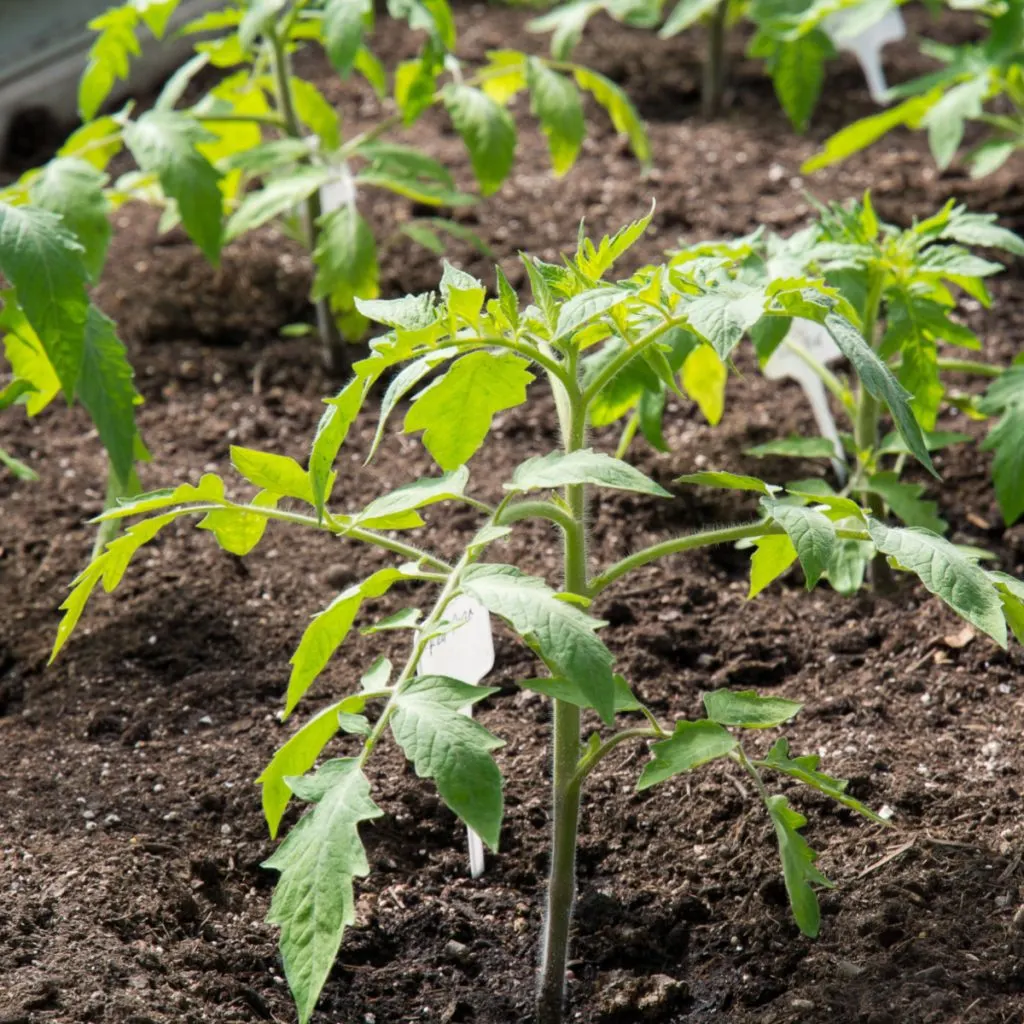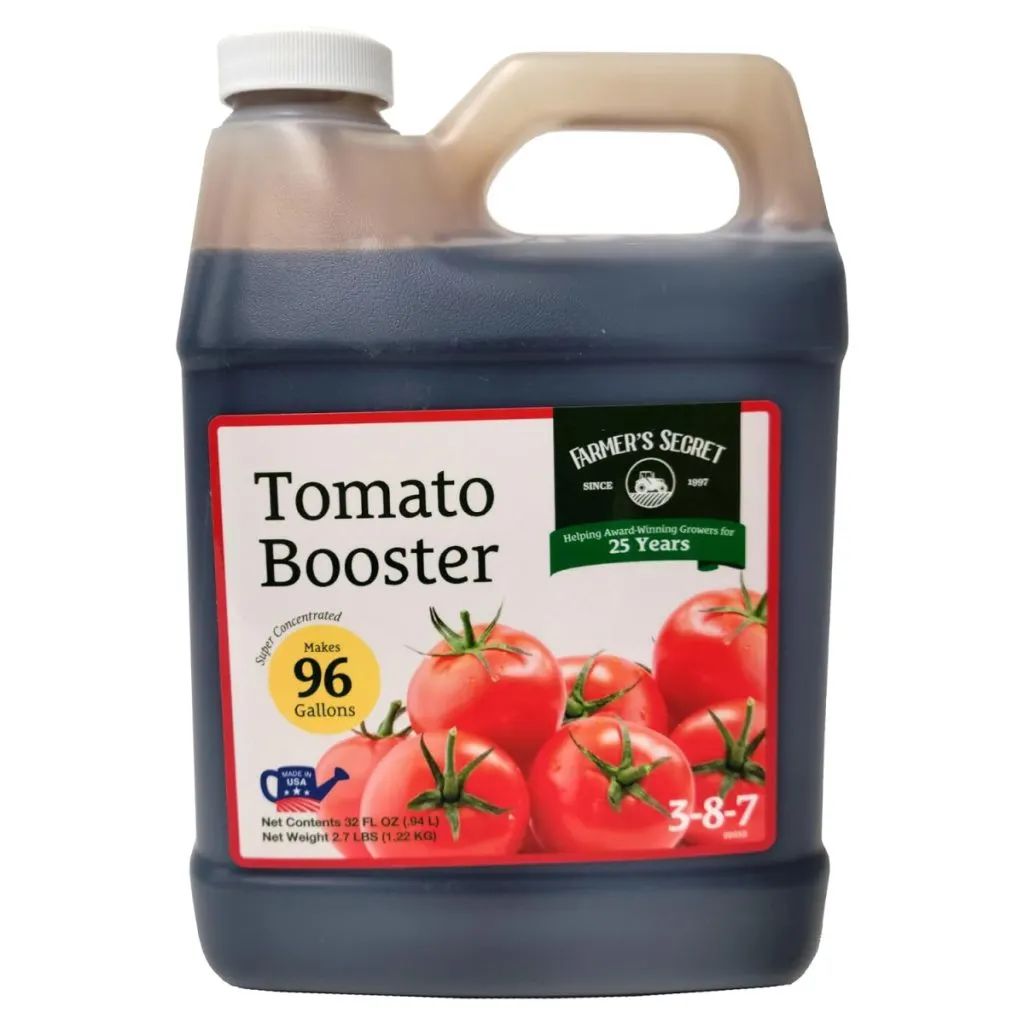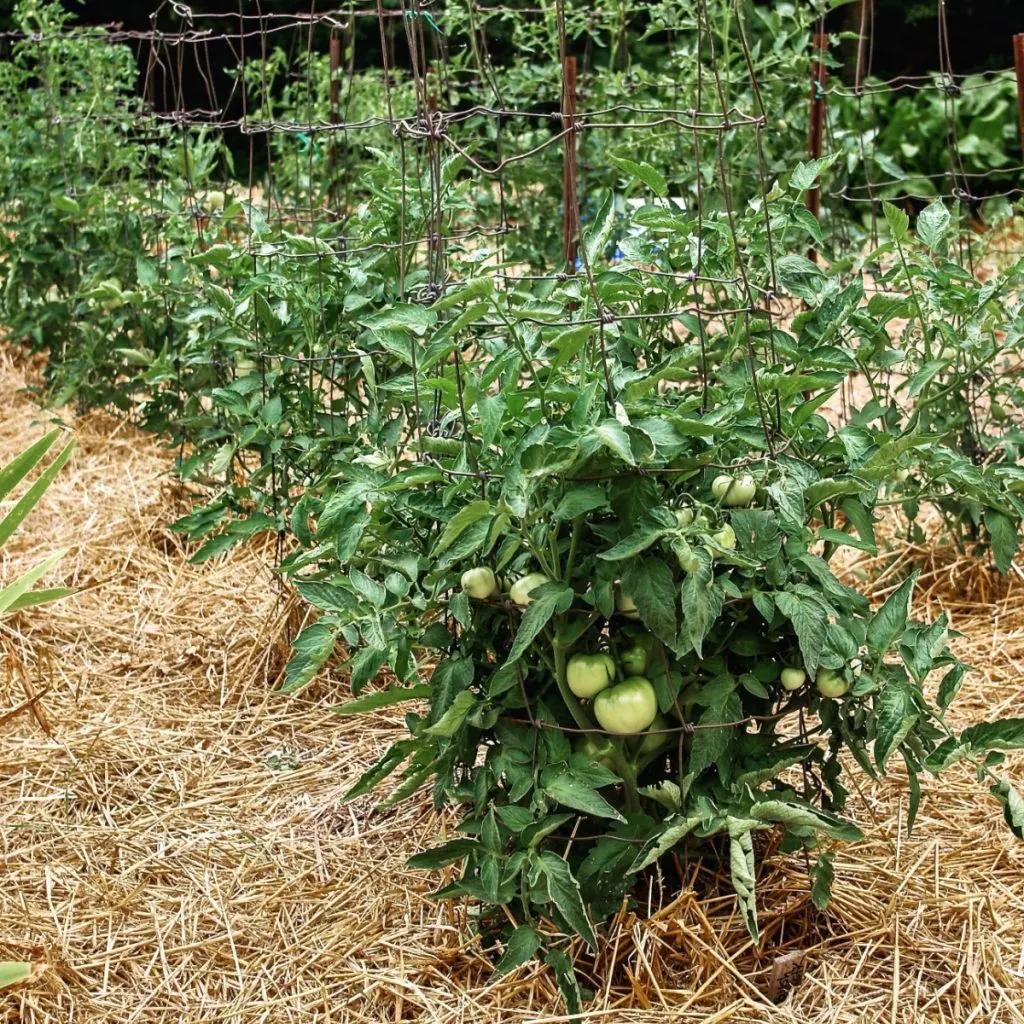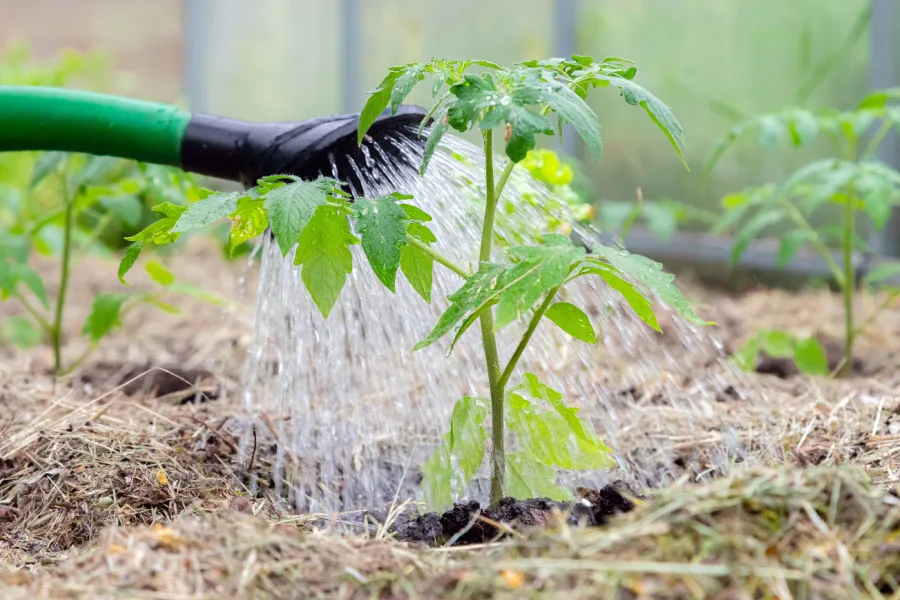Looking for a few simple tips and tricks to get your newly planted tomato plants to start taking off and grow fast this spring?
There is nothing more frustrating to get all of your tomato plants in the ground – only to watch them sit and barely grow at all! As all gardeners knows, it’s vital to get young transplants growing fast – and right from the start.
After all, getting your plants to grow healthy and strong early is the key to having them produce more blooms and fruit later. But for many gardeners, getting their plants to grow right after planting can be a difficult task. Instead of growing bigger stems and leaves, newly planted plants often sit stagnant for days and weeks at a time.

When tomato transplants first go in the ground outdoors, they can often struggle the first few weeks. Most often, it’s simply from having a bit of shock from the transplanting process.
The good news is that with the slightest bit of help, it can be quickly overcome. And in the process, get your tomato plants to take off. With that in mind, here is a look at some of the biggest reasons tomato plants struggle to grow early on – and how to overcome those issues to get your plants roaring off to a fast start!
How To Get Tomato Plants Growing Fast – 3 Secrets To Get Tomatoes To Take Off!
#1 Jump Start Your Tomato Plants With Fertilizer
Tomato plants need a lot of energy to grow and produce. A lot! And even if the soil you are planting in is rich and fertile, young plants can benefit greatly from small doses of extra early power.
This will not only help them recover from the shock of transplanting, but help their roots grow fast and establish deep in the soil. But what, how, and when you give your tomato plants extra nutrients is the real key to success!
The best fertilizer to use on young tomato plants is a liquid fertilizer. Liquid fertilizers absorb through a plant’s roots and foliage. Even better, they absorb and go to work quickly. The best options for liquid fertilizing young tomato plants are compost tea, worm casting tea, or a dose of a liquid fertilizer especially geared toward tomato plants.

It’s important to always allow your plants to establish in the soil for a full week before first fertilizing. Fertilizing too early can actually harm plants while they are adjusting to the new soil.
How To Fertilize Young Tomato Plants
If using compost or worm casting tea, apply a quarter gallon per plant. If using a commercial liquid fertilizer, mix at half strength and apply a quarter gallon per plant. Affiliate Link: Tomato Booster Fertilizer (32oz) – Super Concentrated – 3:8:7
Commercial fertilizers tend to be stronger. Because of this, it’s better to give tomato plants lower doses of regular energy than a big dose all at once. Compost and worm casting tea will not overpower plants, so a full-strength dose is fine.
For young plants, especially ones that might be struggling, re-apply every seven days for four weeks. This will be more than enough to power them up and get them off and running. After that, continue to fertilize every two weeks with the lighter mix.

#2 Mulch Your Plants With Power
One of the biggest mistakes gardeners make with tomato plants early on is failing to mulch. Mulch does so much for your plant’s growth. Especially when you power that mulch with a little energy!
Leaving the soil bare underneath your tomato plants can cause all kinds of issues. First, it allows the soil to dry out far too fast. It also lets competing weeds begin to grow and steal nutrients from your plants. Even more, it lets the hot sun and cool nights change the soil temperature too fast – and that can really impact a tomato plant’s growth pattern.
Don’t just mulch your tomato plants, mulch with power! Start by spreading 1/2 to 3/4 of a cup of coffee grounds on the soil around plants. Add to that another 1/2 to 1 cup of worm castings. These two ingredients will then leach power to your plants every time it rains or you water.
Finally, finish by putting down a thick final layer of straw, grass clippings or shredded leaves. The mulch needs to be a good four to six inches thick to provide great insulation and weed control for your plants. See our article: How To Mulch Tomato Plants – The Best Way To Give Your Tomatoes The Perfect Mulch!

#3 Water Smart – How To Get Tomato Plants Growing Fast
One of the biggest mistakes gardeners make with their tomato plants is how much water they give them. Especially right after they plant them. Surprisingly, more often than not, the issue is not that they are underwatering – but instead, watering their plants too much.
It is true that tomatoes need a fair amount of water to survive and thrive. But when the soil around the roots of a tomato plant becomes overly wet and stays wet, it can cause all sorts of growing problems. Especially when plants are very young.
Soggy roots swell with moisture. And when they do, they become unable to absorb nutrients from the soil. The result is a plant that sits in place with little to no growth at all. Even worse, the leaves often yellow and the plant begins to wilt.
Unfortunately, seeing this, many gardeners think the plant must need more water – and they water even more. Of course, when they do, the problem only gets worse.
Before watering your plants, check down in the soil to see if there is still moisture. Many times, the surface of the soil will dry out, but underneath, there is still plenty of moisture for the roots. And if you continue to water, you will saturate the roots and stunt your plant’s growth.

How To Water For Success
For young plants, watering every day is usually necessary for the first few days as they establish. But after that, only water when the soil at the root level begins to dry out. And when you do water, water deep. This makes the roots drive down in the soil instead of staying on the surface. The deeper your roots grow, the better your plants will!
One of the best devices of all to know if your soil is dry at the root level is an instant read soil meter. The long probe goes deep down and instantly tells you the moisture level. They also happen to be great for knowing when to water hanging baskets and container plants to. Affiliate Product Link: Instant Soil Moisture Meter Probe
Don’t Forget To Prune Early! How To Get Tomato Plants Growing Fast
Last but not least, as your plants start to grow up, begin to prune their lower leaves off early. Keeping your plants pruned at the bottom will allow air and light to get to the soil below. Both light and air are critical factors in helping plants power up through photosynthesis.
In addition, keeping the lower leaves off of your plants will also help keep soil-born diseases like blight spores from splashing up on your plants. As plants reach full size, prune up at least 12 inches to keep the air and light coming in.
And once your tomatoes are done for the season, check out this article: How To Re-Energize The Soil Where Your Tomatoes Grew Last Year – Before You Plant!
Here is to energizing your tomato plants early on – and to growing an amazing harvest of tomatoes this year!
Simple Garden Life
Follow Our Facebook Page For Even More Great Tips! Simple Garden Life Facebook Page
Simple Garden Life is a website dedicated to keeping gardening fun, simple and enjoyable! We publish two new articles each week along with a new garden podcast episode every two weeks. This article may contain affiliate links.
